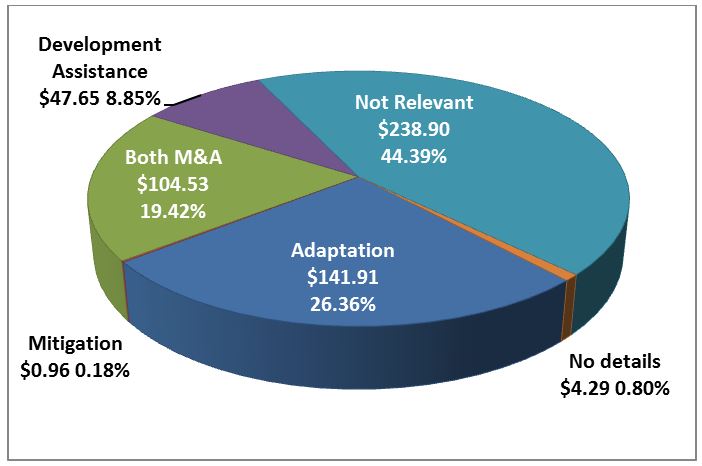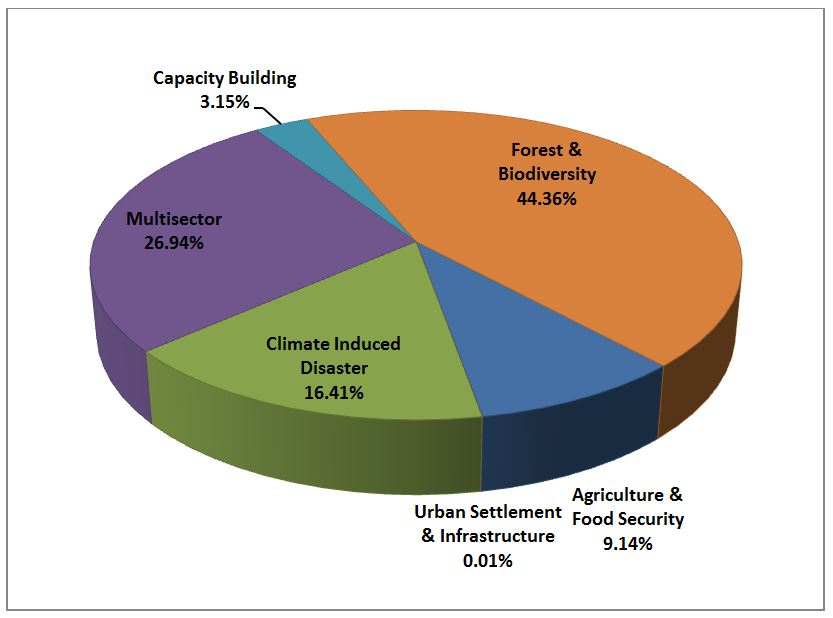Hey Green Climate Fund! Get the money where it’s needed most – the ground
 (L to R) Kali Rana, Manisha Thapa, Sashikala Thadali and Yema Gharti stand beside a seed bank created to help fight hunger in their home village of Dhola in central Nepal. The seed bank stores seeds as a source for planting in case seed reserves elsewhere are destroyed, protecting biodiversity and guarding against natural disasters. The building, which these women have helped build and which Oxfam helped to fund, will also serve as a space for the Village Development Committee to hold regular meetings. Organized groups like these in Nepal are supporting people who are adapting to climate change and groups could utilize additional financial and technical support. Photo: Tom Pietrasik / Oxfam
(L to R) Kali Rana, Manisha Thapa, Sashikala Thadali and Yema Gharti stand beside a seed bank created to help fight hunger in their home village of Dhola in central Nepal. The seed bank stores seeds as a source for planting in case seed reserves elsewhere are destroyed, protecting biodiversity and guarding against natural disasters. The building, which these women have helped build and which Oxfam helped to fund, will also serve as a space for the Village Development Committee to hold regular meetings. Organized groups like these in Nepal are supporting people who are adapting to climate change and groups could utilize additional financial and technical support. Photo: Tom Pietrasik / Oxfam
Being accountable to vulnerable communities who are adapting to climate change means moving beyond business as usual.
Annaka Peterson Carvalho is the Senior Program Officer of the Adaptation Finance Accountability Initiative, led by World Resources Institute, Overseas Development Institute, and Oxfam.
The reality of climate change for people in poor countries is weighing heavily on my mind. People are facing drastic changes in their environments and livelihoods as the 7th meeting of the Green Climate Fund Board nears later this month. The pressure is mounting to reach agreement on the essential requirements for the Green Climate Fund (GCF) to begin operations in support of low-emission, climate resilient development.
In February, the GCF Board made a landmark decision to “aim for 50:50 balance between mitigation and adaptation over time.” The amount of finance available to support adaptation in developing countries has increased significantly since 2009, but more money isn’t enough. The quality of those investments also needs to improve.
Oxfam recently took a closer look at climate adaptation finance in Nepal, which raised a lot of questions. Some quick facts and charts from our study:



4) Only 2.6% of funding for adaptation projects in Nepal comes from financial mechanisms within the United Nations Framework Convention on Climate Change (UNFCCC) regime. The majority of funding, 54%, comes from bilateral sources.
The GCF needs to do better than this!
The Kathmandu Declaration on Financing Local Adaptation to Climate Change calls for a radical shift in these financial flows so that the men and women most vulnerable to the impacts of climate change can adapt. Last month more than 400 people gathered at the 8th International Conference on Community-based Adaptation to talk about financing local adaptation. The Declaration calls on the GCF specifically to:
- Deliver on its promise for a 50-50 split between adaptation and mitigation;
- Channel climate adaptation funding to the local level and build the capacity of countries and communities to access and manage funds;
- Make GFC funding available through enhanced direct access mechanisms; and
- Support strong multi-stakeholder engagement processes to ensure full community ownership, equity, and inclusion – not just national-level government involvement.
As board members head to Songdo, I hope they will take these recommendations to heart and be inspired to move beyond business as usual. I’ll be in tow, reminding them that people and communities facing climate change deserve financial and technical support, so they can build resilience and cope with more erratic, extreme, and destructive weather patterns and events.
Isn’t that why the Green Climate Fund was created in the first place?